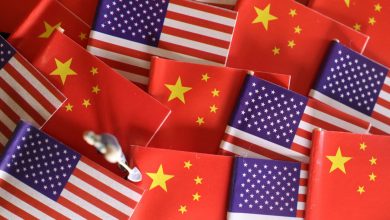Startup founders turn to ‘seed-strapping’ amid difficult VC landscape

“I think what most founders are also realizing is what you need is not just money, but time. You need time to explore … You need space. You can’t have someone breathing down your neck for updates [while you’re] trying to figure out your product market fit at the start,” says Jx Lye, founder and CEO of Acme Technology.
Recep-bg | E+ | Getty Images
With the rise of the modern venture capital industry, it seemed as though the idea of creating a technology startup was inextricably tied to an expectation of raising institutional funding. But many founders today are challenging that assumption.
The practice of bootstrapping — or using one’s own resources to start, grow and scale a business — is not new. Famous companies such as Spanx, Craigslist and GoPro all started in the mid-1990s or early 2000s as ideas that were bootstrapped for years before they took off and became multi-million dollar enterprises.
Today, bootstrapping is seeing a new wave of interest among founders, and amid this rise in attention comes a new idea: “seed-strapping.”
What is ‘seed-strapping’?
The concept of “seed-strapping” entered public discourse largely as a reaction to the major downturn in the venture capital industry in and beyond Silicon Valley.
“There’s bootstrapping and then there’s venture capital … seed-strapping is sort of what I would call the ‘Goldilocks version’ of that,” Josh Payne, general partner of OpenSky Ventures, told CNBC. The idea is to raise a single round of funding and scale profitably from there, he said.
Following the 2008 financial crisis, the U.S. Federal Reserve implemented the zero interest rate policy, which slashed interest rates in an effort to stimulate economic growth. This made borrowing money cheap and incentivized investors such as venture capitalists to deploy more money and into riskier assets.
Covid-19 stimulus compounded those effects, and VC funding peaked during the pandemic years. That led to some startups getting massive valuations, while others became overvalued and ultimately went bust — think WeWork.
After the pandemic, the pendulum swung the other way as investors retreated and venture funding began to dry up. That has led some founders to consider alternative options such as bootstrapping or seed-strapping to fund their companies.
But some founders say it comes with competitive advantages.
Seed-strapped successes
Wade Foster, co-founder and CEO of multinational software company Zapier, seed-strapped his company before the term “seed-strapping” was even around. He said he started the company alongside his co-founders in 2011, before they raised about $1.3 million in seed equity funding in October 2012.
After closing on their seed round, they were able to operate purely off of the company’s revenue, said Foster. By January 2014, the startup became profitable. And by 2020, it hit $100 million in annual recurring revenue, he added.
“I wasn’t familiar with anybody that was [seed-strapping],” said Foster. At the time, founders were either in the bootstrapping camp or in the raising venture capital camp, and it wasn’t until recent years that this idea of “one and done” fundraising became popularized, he said.
Foster and his co-founders were initially trying to bootstrap their company but ultimately decided to raise a seed round so that they could grow more quickly.
“We started the company while in school, and it’s not like we had a lot of savings,” he said. “We were pure bootstrapping … [but] it’s just slower progress, so seed-strapping meant being able to be full-time on it and really give it our all.”
After getting that first round of investments, Foster and his co-founders decided not to raise funds again.
“For us, not raising more had nothing to do with the environment, and had everything to do with the fact that we were able to get profitable,” said Foster. “We were tripling revenue year over year.”
“More capital would just have created more problems for us, and we didn’t want to take the dilution on, if it wasn’t necessary,” Foster said. “We didn’t want investors in our kitchen calling the shots … [we wanted to] allow ourselves to really be in the driver’s seat for where this thing could go.”
Similarly, Payne said he raised only about $750,000 in a seed round for his company StackCommerce in 2011. About a decade later, he sold the commerce and content platform to TPG’s Integrated Media Company for an undisclosed amount.
“We were basically profitable when we raised and stayed profitable after … ran that for about a decade, and then we exited to TPG,” said Payne. “All of the early investors made 10x their investments … It was a really big, successful exit for the investors and for myself.”
For both founders, seed-strapping came with the perks of being backed by venture capital — such as validation, social-proofing, mentorship and resources — but without the dilution and the loss of control over the startup.
“You get all the benefits of raising from venture without, you know, the hangover of it,” said Payne.
I definitely think seed-strapping is going to be a lot more prevalent for companies.
Wade Foster
Co-founder and CEO, Zapier
Another factor fueling this shift is the proliferation of artificial intelligence.
“I definitely think seed-strapping is going to be a lot more prevalent for companies,” said Zapier’s Foster. “I think AI, in particular, is making it more possible, where these companies can use automation [and] tech to get a lot of leverage without having to go hire a bunch of people.”
The most expensive thing in tech is hiring people, and that’s what “makes it really hard for early stage startups to get the flywheel going,” said Foster. “[AI is] making it possible for founders to do one round of funding and then get some profitability and grow pretty meaningfully.”
Southeast Asia versus the U.S.
Today, seed-strapping and bootstrapping have seen a resurgence globally. While the trend has been seen in the U.S. market, industry insiders say it’s even more noticeable in Southeast Asia.
“It’s more pronounced here because you could argue that in Southeast Asia, we are more suited for this kind of bootstrapped business,” said Jx Lye, founder and CEO of Acme Technology.
There are several reasons for that. One of them is that the U.S. is made up of one major market, while Southeast Asia has 11 different countries.
That means the “power law” principle may be applicable to venture capital in the United States but not to the region. “Power law doesn’t work in Southeast Asia,” Jeremy Tan, co-founder and partner of Tin Men Capital, told CNBC. Power law in the context of venture capital refers to the idea that while the majority of startups in a fund’s portfolio will break even or fail, a tiny fraction of companies will generate most of the fund’s returns.
“It’s been popularized in the U.S., and has predominantly been a model used in Southeast Asia, though I think it’s a flop model for this region,” Tan said. “The VCs that run this type of model will look for companies that’ll have phenomenal growth.”
Industry experts say that this type of 100x growth can be extremely difficult to achieve in Southeast Asia because the region is made up of many smaller markets with different languages, cultures and regulatory hurdles, unlike in the United States, where the market is more homogeneous.
I think what most founders are also realizing is what you need is not just money, but time.
Jx Lye
Founder and CEO, Acme Technology
In addition, Southeast Asia has been experiencing a multi-year funding drought.
The region’s startup ecosystem has been undergoing a painful and costly recalibration after funding peaked during the Covid-19 pandemic, which put many startups in a pressure cooker to deliver on their massive valuations.
Exits — which offer investors a way to take out their money and profit on their investments — have also been few and far between in the region, according to industry insiders, which has made many venture capitalists and limited partners more cautious on their bets.
A changing ethos
Beyond the current market environment, there has also been a shift in the ethos of some founders in the region.
“There’s a huge rethink by founders about whether they want to take [venture capital] money,” said Acme Technology’s Lye. “[VC funding] is like basically setting fire to gasoline … but then you have to live up to that valuation.”
Founders are realizing that once they take money from institutional investors, the attention can immediately shift to growth, sometimes to the detriment of the startup. This “growth at all costs” mindset can put a lot of pressure on founders, which can lead to unsustainable business models and more.
There’s no point making all this money, and in the end, you realize that you’re alone.
Jeremy Tan
Co-founder and Partner, Tin Men Capital
“When you start a company, it’s a nonlinear thing. You could go up, you could go down, and that really adds to that pressure, because you have to justify that valuation,” said Lye.
“I think what most founders are also realizing is what you need is not just money, but time. You need time to explore … You need space. You can’t have someone breathing down your neck for updates [while you’re] trying to figure out your product market fit at the start,” said Lye.
“Founders are expected to work very hard, but then I think there’s a fine line,” said Tin Men Capital’s Tan. Why work so hard for years on end, just to lose “everything else” like health or family? “There’s no point making all this money, and in the end, you realize that you’re alone,” he said.



